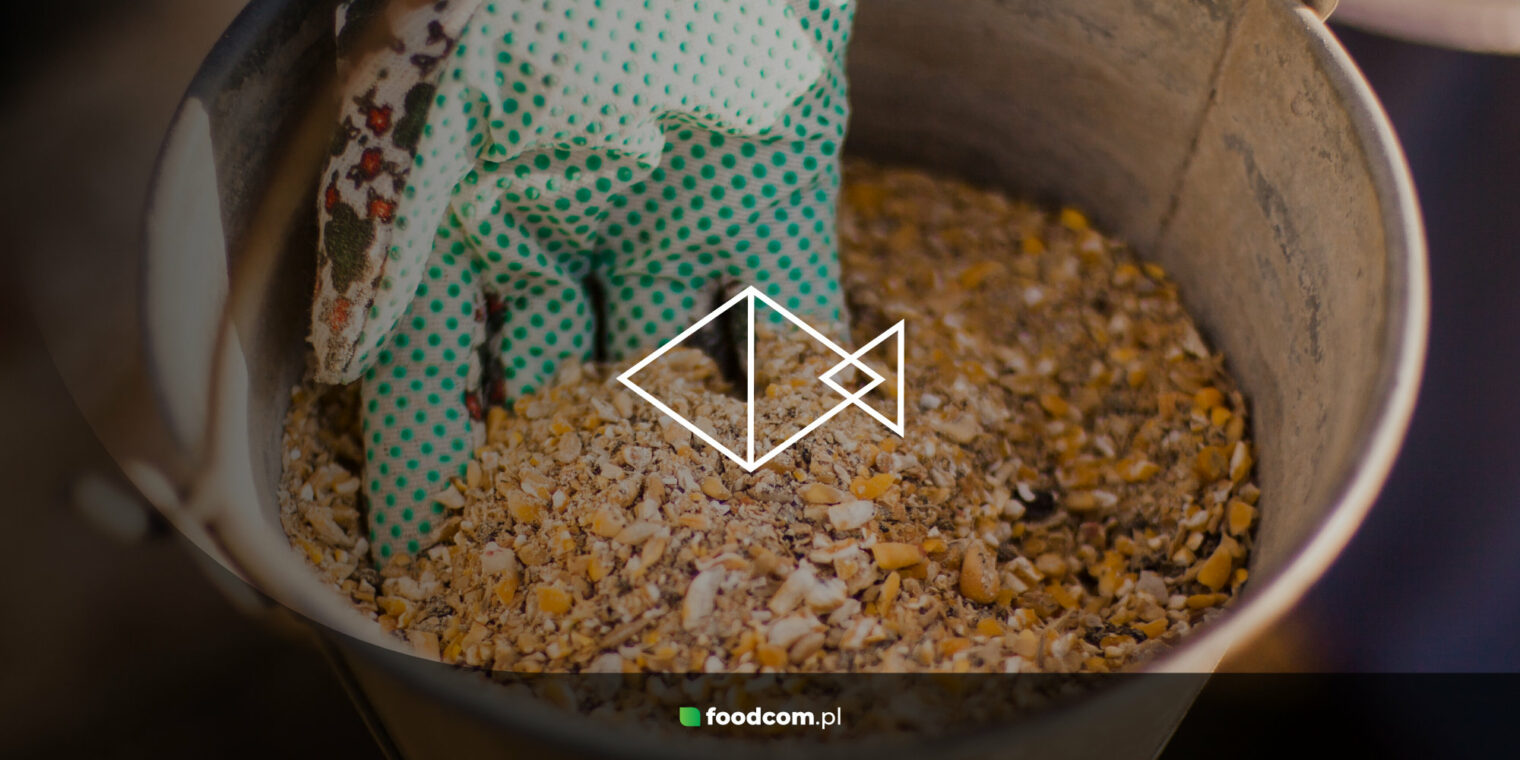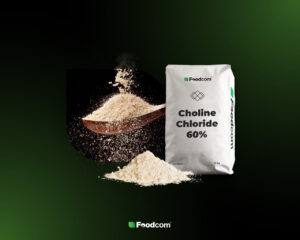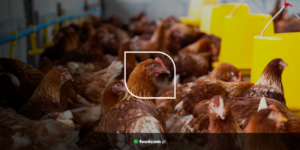- Feed formulation is the process of creating a balanced diet for animals.
- The goal is to provide an economical, palatable, and nutritionally adequate feed to promote optimal growth, health, and productivity
- There are several methods of feed formulation such as the Pearson Square method, trial and error method, and the computer method
- Nutritional additives used in feed formulation can be categorized as amino acids, vitamins, and proteins.
Feed formulation is an important aspect of animal nutrition that affects growth, productivity and animal health. Want to learn more about it? In this article, you’ll find everything you need to know about the role of feed formulation in animal nutrition and which feed additives are the best choices. Be sure to read on!
What is feed formulation?
Feed formulation is the method of producing a balanced diet for animals by selecting and mixing various feed components in appropriate amounts to meet the specific nutritional needs of the animal. Age, weight, production goals, and other physiological requirements of the animal are taken into consideration. The main objective of feed production is to provide an economical, palatable and nutritionally adequate diet to promote optimal growth, health and productivity of the animal.
The goal of feed formulation is to provide an economical, palatable, and nutritionally adequate diet. This means that the feed should be affordable, taste good to the animal, and contain all the necessary nutrients in the right amounts. When these goals are met, the animal is more likely to consistently consume the diet, which is important for optimal growth, health and productivity.
Steps of feed formulation
The process of feed formulation can be divided into several steps:
- Determining the animal’s nutritional needs – this is where you need to start, taking into account factors such as the animal’s age, weight, production goals and other physiological needs.
- Selecting feed ingredients – the ingredients selected should provide the necessary nutrients in the right proportions to meet the nutritional needs of the animal.
- Determining the nutrient content of feed ingredients – ingredients must be analyzed for their protein, energy, fiber, vitamin and mineral content.
- Calculating the nutrient composition of the feed – this involves using mathematical formulas to ensure that the feed contains the required nutrients in the correct amounts.
- Test of the feed – it has to be made sure the feed meets the animals’ nutrient needs and tastes good. This may include monitoring the animals’ growth, health and performance.
Once the feed is introduced, it should be continuously monitored and adjusted to ensure that it continues to meet the specific nutritional needs of the animal. This may include changing the feed as the animal’s age, weight or production goals change.
The importance of feed formulation
Feed formulation is of critical importance in animal nutrition. First, because it leads to improved animal performance. A properly formulated feed provides the animal with all the nutrients it needs for optimal growth and milk or egg production. A properly fed animal has developed strong bones, muscles and tissues, and its immune system is functioning properly, which also leads to improved performance.
In addition, feed formulation reduces feed costs. Since the feed is properly selected and the animals immediately receive the right amount of nutrients, there are no feed losses. In addition, thanks to the feed formulation, the animals are neither overfed nor underfed, which can lead to suboptimal performance, which in turn increases costs.
Not only is the nutritional value of the feed important, but also the physical properties of the feed, such as texture, particle size and palatability, as they can affect the animals’ intake and digestion. The feed should be easily digestible, palatable and free of impurities.
Feed formulation is also important because the performance of an animal can be greatly affected by even the slightest change or difference in the composition of its feed.
Feed formulation methods
Feed formulation methods fall broadly into two categories: manual and mathematical or statistical. Here are the most popular feed formulation methods:
- Pearson Square Method: this is a simple method for formulating feeds with two ingredients. It consists of finding the ratio of the two ingredients and determining the amount needed to produce a given amount of feed. This method is simple and suitable for small farmers, but requires manual calculations.
- Trial and Error Method: in this method, a feed is formulated from available ingredients and tested on animals to determine if it meets the animals’ nutritional needs. Based on the results of the trial, adjustments are made until the desired nutrient profile is achieved.
- Computer Method: this involves the use of special software programs that take into account all factors as well as the availability and cost of the various feed ingredients. By entering these variables into the software, the computer can create a recommended feed formula that meets the animal’s nutritional needs while optimizing costs and minimizing waste. The formula can be easily adjusted to achieve the desired result.
What is feed conversion ratio?
In feed formulation, feed conversion ratio is a term worth knowing. It measures the amount of feed needed to achieve a certain weight gain in animals. It is an important factor for farmers to keep in mind. A lower FCR indicates that the animal is converting feed into mass or product more efficiently, while a higher FCR means the opposite.
By lowering this ratio, farmers can reduce production costs and ultimately increase profits. Therefore, it is important for farmers to monitor this coefficient regularly.

Feed additives to consider in feed formulation
The most important thing in feed formulation are nutritional additives, which are added specifically to achieve nutritional goals. They can be classified into some categories. We present them below with some specific examples of additives that should be considered when formulating a feed.
Amino Acids
Amino Acids are important in animal nutrition because they are the building blocks of proteins, which are essential for growth, development, and repair of tissues in animals. Without adequate protein intake, animals may experience stunted growth, weakened immune systems, and other health problems. In addition, not all Amino Acids can be synthesized by animals, meaning they must be consumed through the diet.
For example, Lysine is an essential amino acid that plays a crucial role in protein synthesis. Including Lysine in animal feed can promote growth and milk production while boosting immunity. In addition, the inclusion of Lysine in animal feed can alleviate the symptoms of herpes and reduce the severity, duration of treatment, and likelihood of recurrence.
Methionine, in turn, plays an important role in the growth and development of the digestive tract of animals and promotes muscle mass, feather development and egg production in poultry. It also helps improve the immune system of animals. Cows that require a higher amount of Methionine for milk production often have it added to their feed, resulting in a lower incidence of health problems and pregnancy loss. Methionine is also used in piglet nutrition as it contributes to creatine synthesis.
Vitamins
Vitamins are necessary for the proper development and growth of animals, as they affect the regulation of many physiological and biochemical processes. They play a crucial role in promoting tissue and bone growth, strengthening the immune system, improving animal performance and enhancing fertility.
Vitamin C plays an important role in the production of collagen, helps the body absorb minerals and strengthens the immune system. It also supports wound healing and helps to cope with stress.
Choline Chloride 60% is also known as Vitamin B4. Animals can benefit from Choline Chloride, as it boosts their immune system, promotes fertility, allows for faster weight gain, and improves the quality of their eggs.
Proteins
Proteins are necessary for the growth and repair of tissues, including muscle, bone, skin and hair. They are also involved in the production of hormones, enzymes, and other important molecules, as well as in maintaining a healthy immune system. In addition, Proteins can serve as a source of energy for animals when carbohydrates and fats are not available.
Potato Protein is used as a source of essential amino acids necessary for increasing muscle mass. It is a valuable source of protein for non-ruminants such as pigs, poultry and fish because of its high digestibility.
Vital Wheat Gluten is used as a source of high-quality protein and to improve the nutritional profile of the diet. It has a high content of essential amino acids, which are necessary for animal growth and development. Vital Wheat Gluten is also highly digestible.
Why Foodcom?
Our great team of Sales Support will help our Traders conduct the contract and business deals in a smooth and efficient way to ensure the best quality service to all our Business Partners. Our logistics team will take care of transportation and the financial department will be responsible for all matters connected with the financial part of the deal. Do not hesitate! Contact us.








